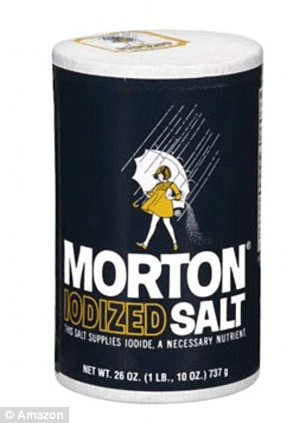Iodine, a trace element, is one of the most important — and most overlooked — minerals your body needs. In the early 1900s, iodine deficiency was a big problem in the United States, but the issue receded after iodine was added to most table salts and used to make dairy and baking products. Today, most Americans still get enough, but some experts fear iodine deficiency is on the rise again, especially among women, and it too often goes undiagnosed.
What Iodine Does
When you don’t get enough iodine from foods such as fish, sea vegetables, and even iodized table salt, you can become iodine deficient. If you’re low in iodine, your body can’t make enough thyroid hormone, which regulates metabolism, body temperature, muscle building and more. This may lead to hypothyroidism or thyroid gland enlargement, also known as goiter, and can cause fatigue, weight gain and constipation.
Iodine deficiency is especially dangerous for pregnant and breastfeeding women. A mom’s inadequate iodine levels can lead to lower IQ, mental retardation and even irreversible brain damage in a developing child. The problem is, [iodine deficiency] is really tough to detect. There’s no direct test for it, and often symptoms aren’t noticeable. Or if they are, it’s usually low energy, brain fog, or dry mouth or skin, which can also be caused by so many other issues.
Why You May Be Low
The recent push to reduce salt intake may be contributing to iodine deficiency among women. They are less likely to add salt to their food or use it when cooking. And even though 75 percent of Americans’ salt intake comes from processed foods, those aren’t made with iodized salt.
Women today also eat a lot less dairy, which contains iodine. Plus, iodine content in fruits and vegetables is hugely variable, depending on the region and soil in which they are grown. Seafood is generally a good source of iodine, but amounts are difficult to quantify. Generally, saltwater seafood contains more iodine than freshwater; iodine also varies by where the fish were caught and in what season.
Common chemicals may also cheat you out of iodine. Constant exposure to fluoride from tap water, chlorine from swimming pools, and bromide from plastic food containers, pesticide-sprayed produce and flame retardant–coated furniture all compete with iodine in the body. The cells that need it the most—thyroid, breast, brain and skin cells—soak up these chemicals instead of iodine.
Address Your Intake
If you suspect you’re low in iodine, first have your doctor check you for thyroid problems. Next, discuss diet. Eating iodine-rich seaweed and sea vegetables such as nori, dulse, kelp and spirulina are commonly recommended.
If you’re a woman in your childbearing years, nutrition guidelines suggest supplementing your diet with 150 mcg potassium iodide (in a prenatal supplement) to achieve 220 mcg total daily intake during pregnancy and 290 mcg during breastfeeding. You can also get iodine through kelp supplements. Be sure to talk over your options with your doctor.
Top iodine foods
Sea vegetables: 16 mcg to 2,984 mcg per serving
Yogurt: 75 mcg per serving
Iodized salt: 71 mcg per serving
Dairy milk: 56 mcg per serving
Enriched bread: 45 mcg per serving
Eggs: 24 mcg per serving
Recommended daily iodine
Birth to 1 year: 110–130 mcg
Ages 1 to 8: 90 mcg
Ages 9 to 13: 120 mcg
Ages 14+: 150 mcg
During pregnancy or lactation: 220–290 mcg
Source: National Institutes of Health
Photo: Iodized salt is just one source of iodine.

 How to resolve AdBlock issue?
How to resolve AdBlock issue? 








